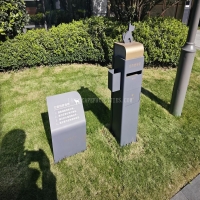Welcome to the website for landscape facilities products and knowledge.
How do manufacturers ensure the trash can’s compatibility with different types of waste sorting systems?
Manufacturers ensure trash can compatibility with different waste sorting systems through a combination of design innovation, material selection, and adherence to industry standards. First, they focus on universal design principles, creating bins with clearly labeled compartments for recyclables, organic waste, and general trash. Standardized color-coding (e.g., blue for recycling, green for compost) helps users across regions identify correct disposal methods.
Second, manufacturers collaborate with waste management authorities to align bin specifications with local sorting infrastructure. This includes optimizing opening sizes to prevent improper disposal and incorporating smart features like RFID tags for automated sorting. Durable, corrosion-resistant materials ensure longevity while meeting hygiene requirements for different waste types.
Third, compliance with international certifications (like EN 840 for waste containers) guarantees interoperability. Some manufacturers even offer modular designs, allowing communities to customize bins as sorting systems evolve. By testing prototypes with actual waste processing facilities, they verify real-world compatibility before mass production.
Advanced solutions include AI-powered sorting lids and weight sensors that educate users while ensuring proper waste segregation. These multi-layered approaches enable trash cans to function seamlessly within diverse waste management ecosystems worldwide.
Related search:

Recommendation
Outdoor cat and dog feces trash can; Community pet trash can; Metal multi-color design